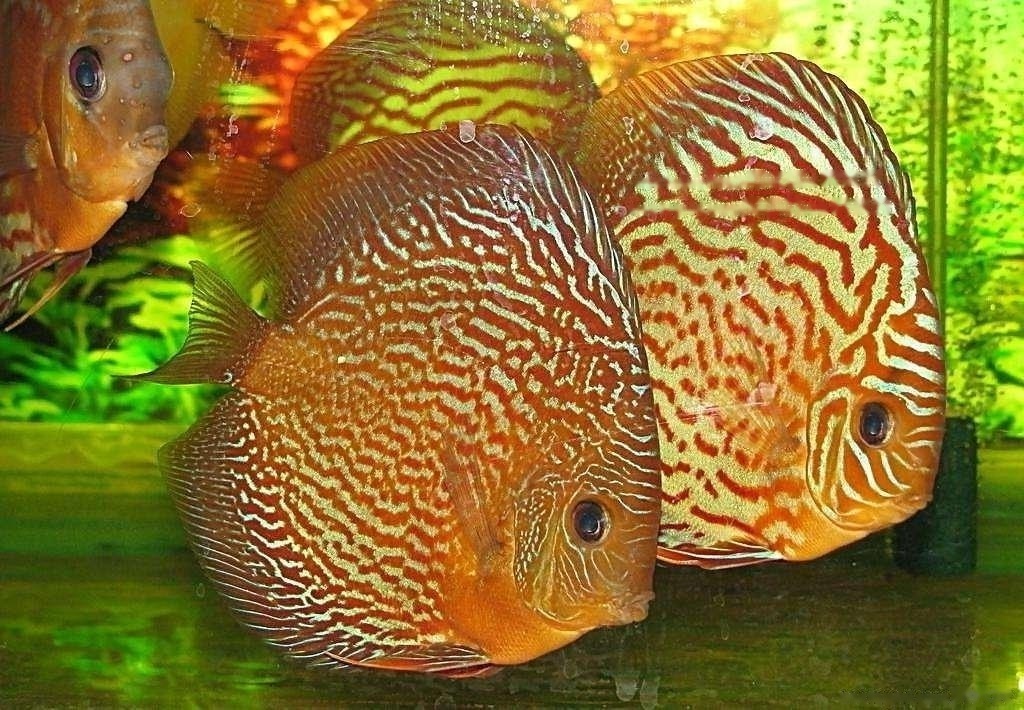
The colorful fairy fish has a variety of colors and is so beautiful that it is known as the king of tropical fish. If you want to polyculture: It is recommended to choose tropical fish to polyculture, but avoid the troubles. Regarding the health and polyculture principles of angelfish, please follow the article below.
1. Determine whether the colorful angelfish is healthy
1. Whether the fins of the colorful angelfish are shrunk instead of being stretched normally.
2. Whether the fish body (including fins) of the colorful angelfish is broken, festered or attached with filamentous or white mucus similar to white mist.
3. Whether the skin color of the colorful angelfish is normal or slightly pale or dull color is not normal.
4. Whether the gills of the colorful angelfish have excessive opening or shortness of breath.
5. Whether the eyes of the colorful angelfish are bright, or dark brown or dark black.
6. For the swimming of colorful angelfish, do you often swim normally with the head held high, with smooth breathing and natural demeanor?
7. Whether the excrement of the colorful angelfish is abnormal, whether there is white stool or dragging feces.
2. Instructions for abnormal treatment of colorful angelfish
1. The water quality needs to be adjusted first: If the colorful angelfish is abnormal, it is necessary to adjust the water quality first, and then decide whether to use it according to whether the condition has improved. drugs to treat.
2. Appropriate amount of medicine at the right time: the treatment of fish disease must be timely, appropriate medicine and appropriate amount, in order to see its effect. If the dosage is too low, it is not enough to form an effective concentration to kill the pathogen, and if the dosage is too high, the pathogen can be killed, but the diseased fish may also be injured or even killed.
3. Accurately calculate the amount of drug: Therefore, before administering the drug, the required amount of the drug must be accurately calculated. General medicine has medicated bath method, oral method, injection method and so on. The medicated bath method is to dissolve the medicine in water to achieve an effective concentration, so the calculation of the amount of water and the amount of medicine is the primary task.
3. Multi-breeding of colorful angelfish and angelfish
1. Similar in appearance: colorful angelfish and ordinary angelfish are both flat and disc-shaped, but only the dorsal fin of angelfish and anal fins are longer.
2. Similar feeding habits: Because the origin of the colorful angelfish and the angelfish are both in the Amazon basin of South America, they both like to eat live bait with high nutritional value such as live nematodes, and they are also comparable to grabbing food.
3. Similar temperament: Both the colorful angelfish and the angelfish are relatively mild-tempered fish, and there will be no strong fighting phenomenon. The author believes that only individual black gods are relatively faulty during the estrus period, and they need to be observed to avoid losses.
4. Similar water quality: Although there are many types of angelfish, the water quality conditions are slightly different, but most of them are weakly acidic water quality and have strong adaptability. The optimum water temperature is around 26-30°C.
3. Introduction to mixed-breeding angelfish
1. Egyptian angelfish: This is also a relatively rare angelfish, characterized by sunken tops of the eyes, prominent snout, and bottom of the body The color is silver-white, with three black bands running parallel to both sides. It has a mild temperament but has a certain territorial nature, and is suitable for raising in large aquaculture tanks.
2. Ordinary angelfish: It can also be called white angel. It is the artificially bred offspring of ordinary angels. It also has obvious horizontal stripes on its body, but it is darker. Similar in appearance to Egyptian gods, it is easy to raise.
3. Golden Body Angelfish: It is an artificially cultivated variety. The head of the adult golden-headed fairy is golden, and the body of the golden-body is golden. , the fins also shine, with long tails and short tails.
4. Blue Angelfish: It is also an artificially cultivated species. Under normal conditions, the body surface emits a silvery white to blue luster. The color of the dorsal and anal fins of the adult fish is more obvious, and it has an elegant softness. charming.
4. Principles of polyculture of colorful angelfish and lampreys
1. Strong non-aggressiveness: do not mix-culture those with high activity, strong aggressiveness and those that eat aquatic plants Light fish.
2. Select small lantern fish: choose medium and small lantern fish. In this way, the disc-shaped body of the colorful angelfish can balance the vision, and the lively lampfish can bring a lot of life to the quiet colorful angelfish aquarium.
3. Choose a gentle personality: Because the colorful angelfish is very sensitive and afraid of being frightened, all fish that like to swim are not included in the mixed breeding enclosure, such as cherry lamp, emperor lamp, etc.
4. Avoid biting fins: such as blue king lanterns, golden cross lanterns, flying phoenix lanterns and yellow lanterns, etc., because they will bite the fins and scales of other fish, they cannot be mixed with colorful angelfish .
5. Recommendations for polyculture of lantern fish: Lotus lantern, red nose scissors, traffic light, mini lantern, Asian lantern fish (Baiyun Mountain, Triangle lantern), African lantern fish (blue-eyed lamp, swallow beauty) .
![[Dog Training 5] The training method of pet dog dining etiquette](/static/img/12192/12192_1.jpg)




